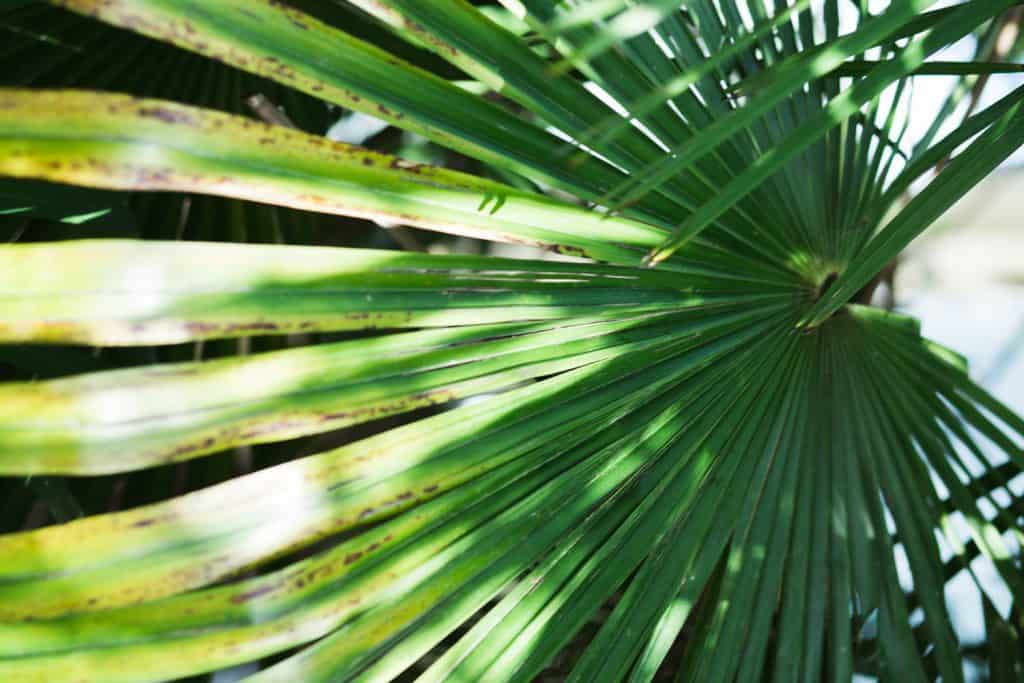The areca palm tree has long fine-textured leaves or fronds that distinguish it from other types of trees. These trees are great for accenting sidewalks and driveways, and they're all so great for privacy. But how far apart should you plant them? We've researched the appropriate distance between areca palm trees, and in this post, we will cover this topic in depth.
The distance between the areca palm plants will depend on where the plants are located. If you're looking to use the palms as hedge plants, it's best to space them out three to six feet away from one another. However, if you plan to place the plants around other areas of the house, it's best to place them at least four feet away from any structures such as gutters, the home itself, driveways, etc. The reason is to account for the plant's growth and ensure that it does not encumber the home entrance and exit areas.
It's important to know how far apart to plant your areca palm trees before purchasing them and digging up any soil. This will require measuring the area where the plants will be placed and determining how many you'll need to cover it. Continue reading to learn more about planting areca palms and planting them correctly.

Reasons Why Spacing Is Important for Areca Palms
Spread Length
A minimum spacing length is required for areca palms to ensure that the fronds have the ability to grow and spread to their full potential. Depending on the amount of sunlight that the trees receive, they can spread anywhere from five to eight feet long. If you group the plants too close together, you will create a very condensed cluster of fronds that can hinder growth. Each frond must have enough access to the sun for photosynthesis.

Sunlight Requirements
Areca palm trees require full sun to grow properly. Spacing the trees too closely can stifle their growth, as the leaves will overshadow one another.
For example, if you place the plants only two feet apart, not only will the tree trunk possibly encumber the neighboring tree's trunk, but the branches and leaves of the tree will not get the sunlight that they need to thrive. Remember, palm trees are sun-loving trees, and it's vital for all sides of the tree to receive an adequate amount of sunlight daily.
Root System
Although areca palm trees do not have invasive roots, the trees must be properly spaced from the roots of the neighboring trees to prevent competition for nutrients and minerals. The roots of the areca palm are generally fairly small in diameter, and they tend to grow out to be about five times the diameter of the tree--they grow horizontally. If they are too close together, the roots can mingle together, preventing neighboring smaller roots from gaining access to nutrients from the soil.
Water Access
Lastly, you don't want the trees competing for water. Thirsty plant roots can spread out along the soil in their search for water. If the trees are planted too close together, you'll find that some trees may become dryer while other trees thrive. This is because the trees with the larger roots will suck up the water before the others have a chance to absorb it.
It's important to remember that areca palm trees can be pretty demanding when it comes to water. They'll quickly show signs of wilting if the soil is not kept moist. For this reason, there must be adequate and consistent spacing among the trees, especially in the summer months.
How wide do areca palms get?
Most areca palms will reach a mature width of about seven to 10 feet. Keep in mind that palms grown indoors will typically grow smaller than those growing outdoors due to space and environmental limitations. That being stated, you can expect your indoor areca palm to have a spread of anywhere from two to four feet.
How long does it take for areca palms to grow?
On average, these palm trees mature at about 10 years. They are a relatively fast-growing tree and typically grow anywhere from five to ten inches per year until they reach their mature height. However, the final height at which they grow will depend on their growing conditions. Areca palms grown indoors will typically reach a mature height of about seven feet.
Do areca palms like to be root bound?
Yes. Areca palm tree roots do prefer to be a bit cramped in their container. However, they must have adequate drainage holes to prevent them from becoming overwatered. The plant's cramped roots help it to maintain a size that's suitable for indoor growth. However, if you want the plant to grow taller, you can place it in a pot that's a few inches larger than its current pot, one to two inches will suffice. If not, you'll only need to re-pot the palm every other year.
Find out more details about this plant pot on Amazon.
How fast do areca palms grow outside?
Areca palms typically grow anywhere from eight to 15 inches per year when grown outdoors because they have no limitations on their growth. Overall, they can grow to be anywhere from 10 to 30 feet tall.
Do areca palms spread?
Yes. The areca palm tree does spread. The offshoots grow from the base of the plant, similar to that of a bamboo tree. Eventually, the offshoots will grow so long to the point where they began to spread out horizontally, increasing the spread of the entire tree. For this reason, it's important to adequately space your areca palm trees to ensure that they don't become too cramped in their space. If the canopy of palm becomes too wide for your indoor or outdoor location, you can prune it down, however.
Check out these pruning shears on Amazon.
How do you multiply areca palms?

If you're looking to multiply your areca palm, you can split up the plant to propagate it. Let's look at the right steps to do this.
1. Separate the offshoot
Start by using your hands to separate an offshoot from the bottom of the tree. Next, take a utility knife and split the offshoot away from the main branch. If you're having trouble cutting the offshoot, you can also use a small electric saw, especially if the tree is fully mature.
Check out this utility knife on Amazon.
2. Cut the offshoot
After you cut off the offshoot from the main branch, pull it away from the soil by its base. Be sure to grab the offshoot strongly to free it from the soil, as it may require a bit of effort. Keep in mind that the offshoot probably won't come out of the ground in one tug, so you may need to rock it back and forth a few times to loosen it up around the soil. It's also helpful to take a small garden shovel and dig around the offshoot to make it a bit easier.
Read more details about this garden shovel on Amazon.
3. Soak the offshoot seedling
Next, wipe off the dirt from the offshoot, and then place it in a bowl of spring water for 45 minutes to an hour. The water should be cool or lukewarm, and the roots should be completely submerged in the water. When removing the offshoot from the water, be sure not to touch the plant's root, as it can be damaged easily.
4. Plant the offshoot seedling
Next, transplant the small offshoot into a planter's pot. Be sure that the pot is big enough to fit the offshoot completely. Next, pour in your soil mixture and then place the offshoot inside of it. Be sure that the roots on the bottom of the offshoot are completely submerged in the soil at least a few inches down. Add water to the soil until it reaches one inch above the top layer.
You can also add sand and peat moss to the soil mixture to make it a bit heavier. Once your offshoot begins to grow roots, you can begin watering the plant as usual. The offshoot will take about five to six weeks to germinate. Try to keep the environment had a humidity level of at least 50% and on the warm side so that the offshoot doesn't die before it has a chance to grow.
Read more details about this peat moss on Amazon.
Wrapping Things Up
We hope that this post has been helpful in illustrating how to space areca palms when planting them. Remember, these plants will spread anywhere from six to eight feet, so they must have enough room to breathe and absorb sunlight. This will prevent their fronds do not become damaged from overcrowding.
Before you go, be sure to check out our other posts:





